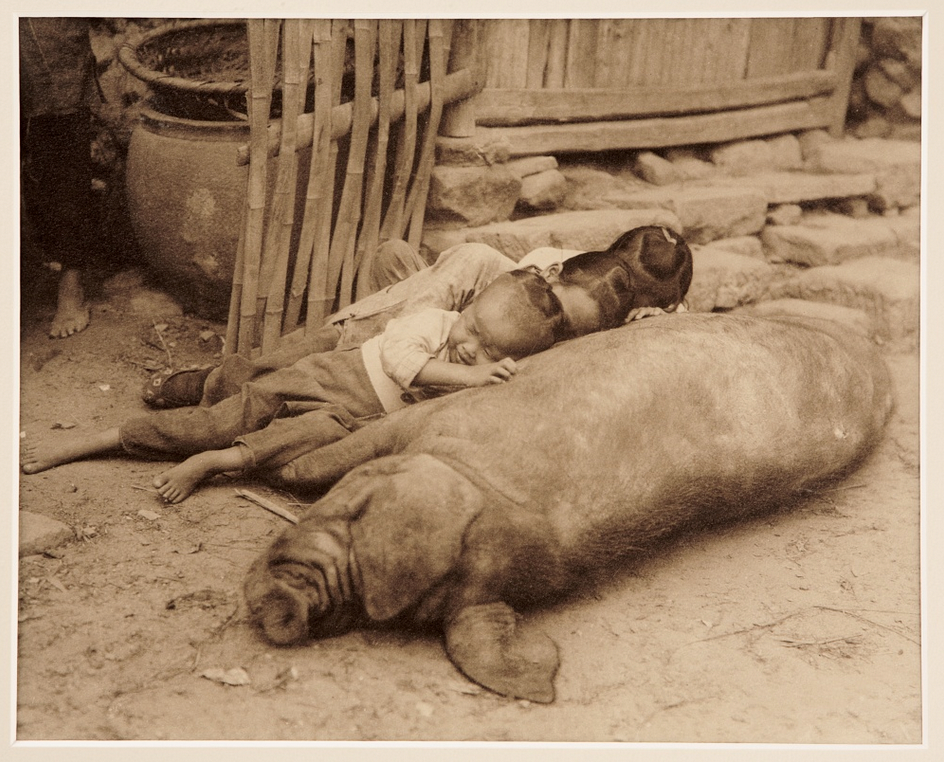
Pigs have been symbols of both divine fruitfulness and immortality and of slovenliness, gluttony and lust. They have also often been mistaken as stupid or ignorant, which the pig personifies, for example, in the Chinese zodiac and in some Buddhist iconography. Yet the pig is actually highly intelligent and instinctually cunning in the service of survival. Omnivorous, pigs do not horde their food for later days; they simply eat it as they find it, not discriminating fresh food from trash.
Worldwide, mythologies are rich with the image of the pig. The Egyptian sky goddess Nut was often depicted as a pig who swallowed her piglets, the stars, every morning and bore them again each evening (Jackson, 17). The Buddhist goddess of the dawn, Marichi, rode a chariot pulled by seven pigs (Lerner, 128). When Hainuwele, the New Guinean goddess, was ritually murdered, a pig was born from her dismembered body, making pigs divine by nature. The Irish god Dagdha possessed a pig that was perpetually slaughtered and eaten and perpetually restored. One of the forms of Egyptian Set, personifying divine disorder, was a black pig.

With the rise of patriarchy and monotheism, pig’s association with the divine feminine engendered prohibitions against eating pork and the fantasy of pigs as receptacles for demons and all that was unclean. Pigs, or “swine”, became emblematic of sin. Even in the twentieth century, “pig” was still a metaphor for the lascivious male, greedy capitalist and brute cop, and pigs are the selfish despots of George Orwell’s Animal Farm. Yet other stories, especially children’s tales like Charlotte’s Web, Winnie-the-Pooh and Babe, reflect different attributes of the pig—innocence, sensitivity, intelligence and loyalty. The pig in itself is a keenly smart animal of prodigious size, strength and resourcefulness, and of sensibilities that contravene our entrenched perceptions.
Jackson, Eve. Food and Transformation: Imagery and Symbolism of Eating. Toronto, 1996.
Lerner, Martin, et al. The Lotus Transcendent: Indian and Southeast Asian Art from the Samuel Eilenberg Collection. NY, 1991.


